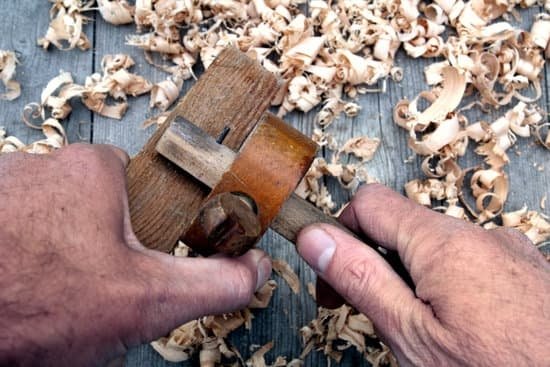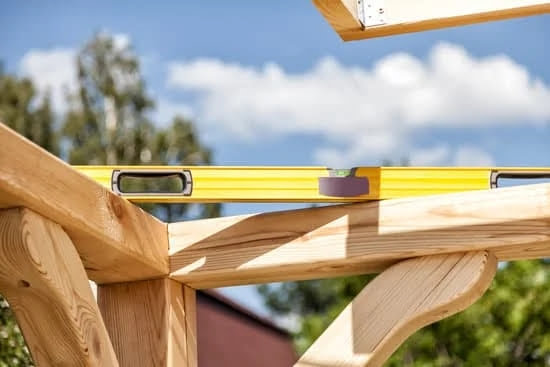Introduction
Plane woodworking is a style of craftsmanship that has been practiced for centuries, and it involves the careful shaping and chiseling of wood by hand. It is one of the oldest methods used to create wooden furniture, sculptures, and other pieces of art. Plane woodworking requires patience, skill, and an attention to detail to achieve an accurate shape. The tools involved in plane woodworking are specially designed planes, chisels and files. Plane woodworking has been around since ancient Egypt and it is still popular today due to its versatility and unique results. Whether you’re looking to add custom touches to your home or craft something from scratch, plane woodworking offers endless potential. Plane woodworking allows individuals to make precision cuts as well as create smooth surfaces with any type of grain pattern imaginable. In addition, the use of planes can help ensure that all pieces fit together properly when building a structure or creating new furniture items.
Tools of Plane Woodworking
There are several types of plane woodworking tools available, each designed to carry out particular tasks in woodworking. General purpose hand planes range in size and design, from small block and smoothing planes that are used for general-purpose flattening and smoothing, to larger models called jointer and jack planes which are designed for truing the edge of boards. Rabbet planes are designed to cut rabbets and grooves or tenons along the edges of a piece of wood, while shoulderplanes are designed to shave off a fraction of an inch around the corners of your project. Plow planes help create grooves along boards whereas spokeshaves allow you to shape curves more accurately.
These tools can take some practice to use properly but when mastered they offer great precision for sanding and shaping your projects with accuracy. Using the appropriate plane will help save time, increase accuracy, and produce a much smoother finish on your workpiece than is possible with other tools such as chisels or belt sanders.
Benefits of Plane Woodworking
Plane woodworking has a number of benefits over other woodworking methods such as sawing and routing. Plane woodworking provides much more precise cuts than sawing, allowing for extremely accurate joinery and craftsmanship. Additionally, plane woodworking requires less material waste since it does not require any intricate cutting or grinding like saws do. As a result, plane woodworking is often seen as the most economical option for creating joints and carvings in wooden pieces. Furthermore, plane woodworking produces beautiful and finished surfaces with little additional effort since it creates a smooth finish to the edges due to its scraping action when used correctly. Finally, plane woodworking is highly portable and doesn’t require you to use electricity or heavy tools, making it an ideal choice for remote locations or small workshop spaces.
Mastering the Techniques
The key techniques involved in plane woodworking are: setting the plane for a specific cut, cutting the board with the plane, making adjustments to create an accurate and desirable result. To hone your plane woodworking skills, it is important to practice the essential techniques of hand planing such as learning how to effectively hold the plane and control its speed. Additionally, learning how to read grain direction and angle of attack is essential for achieving desired results. It is also important to stay focused on safety precautions such as wearing protective equipment and using good posture when using planes. Finally, keeping your planes sharp is essential for a good final result. Becoming familiar with how to sharpen blades, change iron bevels, adjust depth stops on a plane can help you to become more confident in achieving desired results.
Safety
When using planes, it is essential to take safety precautions. First, make sure you wear protective eyewear and clothing such as gloves and trousers that have pockets to hold chisels and other sharp tools. Secondly, ensure the plane blades are sharp enough to perform the task but not overly so, as this can cause kickbacks. Thirdly, stand with your hands fully behind the plane or use a push stick to protect them against possible kicks back or errant chips of wood flying into them. Finally, clamp the wood onto your workbench securely before beginning in case of any unexpected movement while planing. Additionally, it is also important to check for electrical cords that may be in the way when working in order to avoid potential danger.
Efficiency and Time-Saving Strategies
Organization is key when it comes to woodworking and planning out your projects in advance is the best way to make sure everything goes smoothly. Begin by gathering all of the supplies and materials you will need before starting your project so that you can work uninterruptedly with no breaks. Also, create a list of tasks that need to be completed and prioritize them according to importance or simplicity. Saving time can also come in the form of eliminating tasks that may not be necessary like sanding wood after assembly or doing a final touch up on paint. Furthermore, double-check all measurements prior to cutting or assembly to ensure accuracy as mistakes are time consuming to fix and costly when buying new materials. Finally, think about investing in some tools specifically designed for more efficient woodworking such as power saws, sanders, routers, and jigsaws. These tools can help expedite production times allowing you get more out of your day.
Advanced Techniques
The most advanced plane woodworking technique is to master the use of specialty plane irons to accomplish specific tasks. One example of this is creating curves and shapes with a convex plane iron, or hollowing out unusually shaped objects with a skew plane iron. If you’d like to add complex details to your work, trying using a round bottom diamond plane blade, which can produce intricate decorative effects that require precise chisel work. Finally, mastering the art of bent planes will enable you to shave difficult angles in even the tightest spaces — ideal for cutting dovetails into corners or making small mouldings. To take your plan woodworking further still, try investing in some specialized types of planes, such as shoulder planes or rabbet planes designed for specific tasks.
Conclusion
Plane woodworking is an important skill for all types of woodworkers. It provides the ability to create smoother, more accurate finished products with less effort. Woodworkers can use this technique to craft everything from furniture and cabinetry to signs and trim work. Plane woodworking also offers some unique advantages over other manufacturing processes, such as being able to maintain more consistent tolerances over time due to the lack of mechanical parts in the process. By mastering plane woodworking, woodworkers can create high-quality projects that are both beautiful and functional.

Hi everyone! I’m a woodworker and blogger, and this is my woodworking blog. In my blog, I share tips and tricks for woodworkers of all skill levels, as well as project ideas that you can try yourself.





